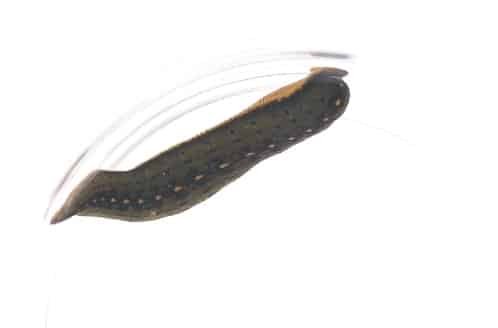
A New Species of Leech Is Discovered Near Washington, D.C.
by Lila Thulin Smithsonian.com
In the summer of 2015, when Smithsonian research zoologist Anna Phillips and other scientists were standing in slow-moving swamp water, letting leeches latch onto their bare legs or gathering them up in nets from muddy pond bottoms, they didn’t realize that some of the bloodsuckers they’d collected belonged to an entirely new species. But in a just-published paper in the Journal of Parasitology, Phillips and her colleagues from the Universidad Nacional Autónoma de México and the Royal Ontario Museum report that a previously unknown leech species, Macrobdella mimicus, is the first to be discovered on the continent in more than 40 years.
An international collaboration investigating biodiversity in leech populations led Phillips, a curator of parasitic worms and invertebrate zoology at the National Museum of Natural History, to streams and ponds across the eastern United States. Wading into the water, she checked rocks and submerged wood scraps for leeches to collect and analyze.

Carol graduated from Riverside White Cross School of Nursing in Columbus, Ohio and received her diploma as a registered nurse. She attended Bowling Green State University where she received a Bachelor of Arts Degree in History and Literature. She attended the University of Toledo, College of Nursing, and received a Master’s of Nursing Science Degree as an Educator.
She has traveled extensively, is a photographer, and writes on medical issues. Carol has three children RJ, Katherine, and Stephen – one daughter-in-law; Katie – two granddaughters; Isabella Marianna and Zoe Olivia – and one grandson, Alexander Paul. She also shares her life with her husband Gordon Duff, many cats, and two rescues.
ATTENTION READERS
We See The World From All Sides and Want YOU To Be Fully InformedIn fact, intentional disinformation is a disgraceful scourge in media today. So to assuage any possible errant incorrect information posted herein, we strongly encourage you to seek corroboration from other non-VT sources before forming an educated opinion.
About VT - Policies & Disclosures - Comment Policy



